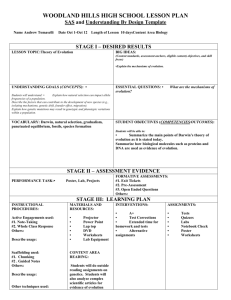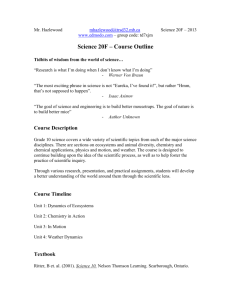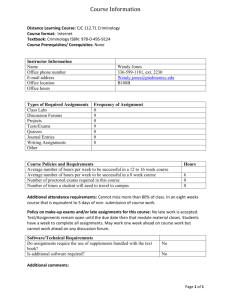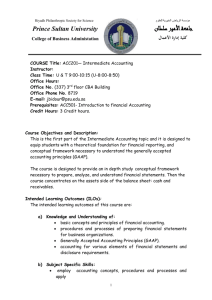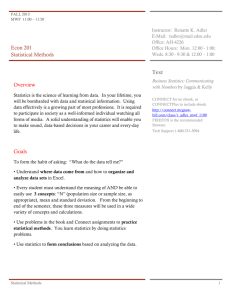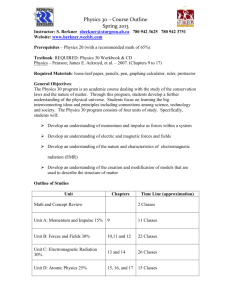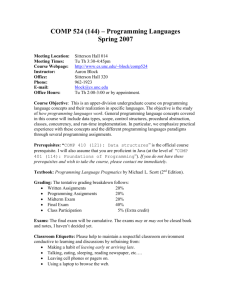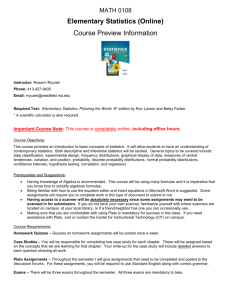Student Accommodations--ESL (English As A Second
advertisement
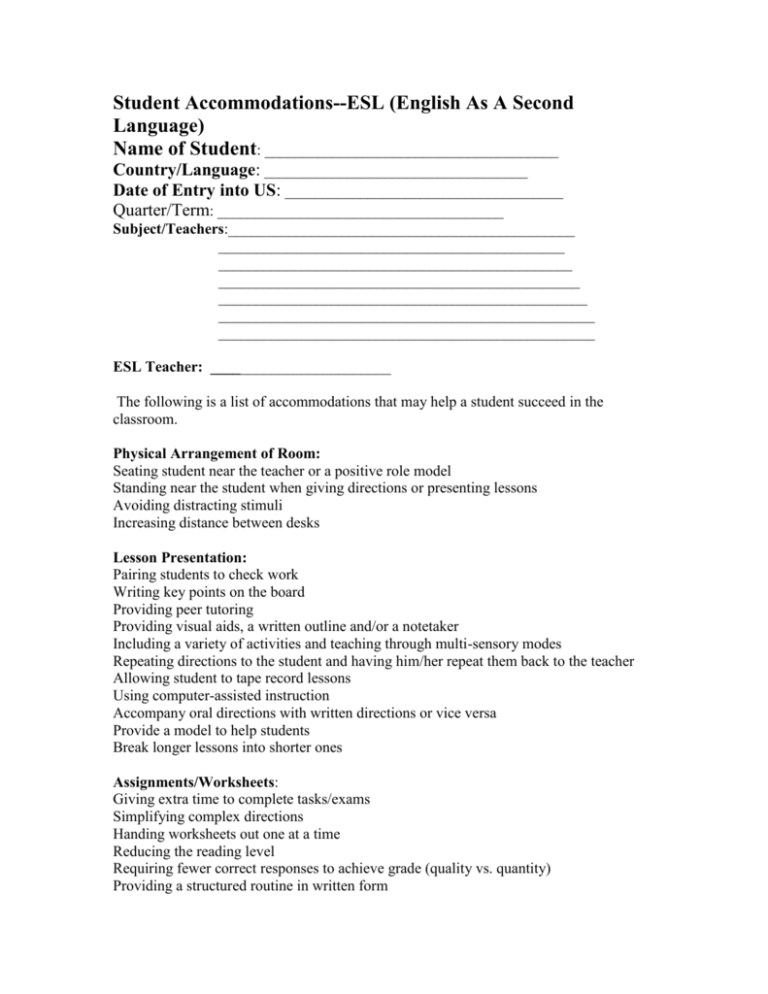
Student Accommodations--ESL (English As A Second Language) Name of Student: _______________________________________ Country/Language: ___________________________________ Date of Entry into US: _____________________________________ Quarter/Term: ______________________________________ Subject/Teachers:______________________________________________ ______________________________________________ _______________________________________________ ________________________________________________ _________________________________________________ __________________________________________________ __________________________________________________ ESL Teacher: ________________________ The following is a list of accommodations that may help a student succeed in the classroom. Physical Arrangement of Room: Seating student near the teacher or a positive role model Standing near the student when giving directions or presenting lessons Avoiding distracting stimuli Increasing distance between desks Lesson Presentation: Pairing students to check work Writing key points on the board Providing peer tutoring Providing visual aids, a written outline and/or a notetaker Including a variety of activities and teaching through multi-sensory modes Repeating directions to the student and having him/her repeat them back to the teacher Allowing student to tape record lessons Using computer-assisted instruction Accompany oral directions with written directions or vice versa Provide a model to help students Break longer lessons into shorter ones Assignments/Worksheets: Giving extra time to complete tasks/exams Simplifying complex directions Handing worksheets out one at a time Reducing the reading level Requiring fewer correct responses to achieve grade (quality vs. quantity) Providing a structured routine in written form Providing study skills training/learning strategies Giving frequent short quizzes and avoiding long tests Allowing typed assignments or allowing students to dictate assignments Using self-monitoring devices Reducing homework Not grading handwriting Not requiring lengthy, outside reading assignments Arrange for communication between school & home regarding homework Recognize and give credit for student’s oral participation in class Test Taking: Allowing open book exams Giving exam orally Giving take home tests Fewer essay responses Allowing students to give test answers on a tape recorder Remove time constraints Organization: Provide assistance with organizational skills Assign a volunteer homework buddy Allow student to have an extra set of books at home Send daily/weekly progress reports home Develop a reward system Provide an assignment notebook Behavior: Use timers to facilitate task completion Structure transitional and unstructured times Use self-monitoring strategies Give extra privileges and rewards Keep classroom rules clear and simple Make “prudent use” of negative consequences Allow for short breaks between assignments Nonverbal cues for student to stay on task Mark student’s correct answers – not mistakes Implement a classroom behavior management system Allow student time out of seat to run errands, etc. Ignore mildly inappropriate behaviors Use of behavioral contracts Increase immediacy of rewards Implement time-out procedures (over)

